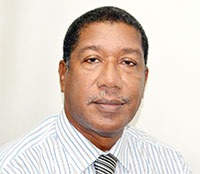THERE can be no doubt that haemorrhage ( bleeding ) is frequently associated with dentistry. Also, no one can deny that bleeding after an extraction is a perennial worry of many patients. No other profession has been so involved in this process save the time when medicine was preoccupied with employing “leaches to bloodlet” as a form of treatment.
Bleeding can be classified as primary, intermediate, or secondary, based on the occurrence. Primary bleeding occurs during surgery and is attributable to cutting of the blood vessels. Under normal conditions, applying pressure along with the retraction and contraction of blood vessels is sufficient to promote arrests. Frequently, when infiltration anaesthesia is used, the vasoconstricting (contracting blood vessels ) agent also helps promote the arrest of bleeding. It is apparent that many extrinsic and intrinsic factors can prevail to promote coagulation.
Intermediate haemorrhage refers to bleeding which occurs within 24 hours of surgery ( extraction ). The likelihood of this happening is due to many factors, eg. removal of pressure, dissipation of vasoconstricting agents, and relaxation of blood vessels.
Secondary haemorrhage occurs 24 hours after surgery and is frequently attributable to many factors, e.g., intrinsic trauma (loose chip bones ), infection, etc.
The post-extraction wound basically, and for the sake of discussion, consists of two types of tissues: hard and soft. The hard- tissue component, bone, constitutes the greatest part of the wound, whereas the soft tissue makes up the smallest part of the wound. Haemorrhage can occur from either of the components.
Bleeding from bone can be difficult to control because, unlike a soft-tissue wound, the walls cannot be collapsed and approximated to provide the relaxation required to promote retraction and contraction of the vessels. Perhaps the most common cause of bleeding is due to the pressure of infection, periodontal ( gum ) and periapical ( root tip ),. Whenever there is an infection, there is frequently inflammatory proliferation (granular tissue ) and inflammatory hyperemia ( increased blood flow ). Therefore, there is an increase in the number of blood vessels along with hyperemia. The treatment for bleeding can be arbitrarily grouped as follows: prevention, pressure, cold, haemostatic agents, and vasoconstriction ( local anaesthetic ).
Methods of minimising, if not preventing, haemorrhage should resorted to. Atraumatic surgery, elimination of chronic bleeding granulation tissue, removal of fracture splinters of bone, and excision of old necrotic clots (if such is the cause ) are suggested measures well worth taking. Preventive therapy is undoubtedly one of the most important forms of therapy available to control bleeding.
Applying direct pressure to the wound is certainly the most effective way to stop bleeding. Compressing the margins of the wound to relieve tension allows the vessels to retract and contract. The patient should bite on the cotton or gauze for an hour in order to aid in collapsing blood vessels and encourage clotting. Suturing, filling the wound with gauze soaked in benzoin, applying ice packs, and injecting local anaesthetic around the site are all ways to arrest bleeding. Premarin and Vitamin K administered systematically can also be used.



.jpg)








